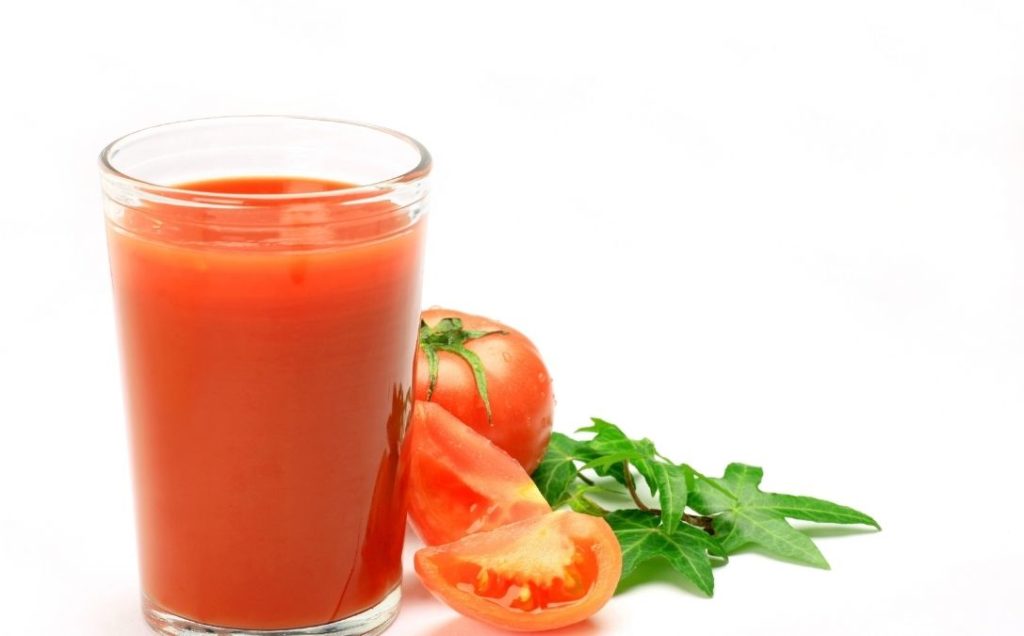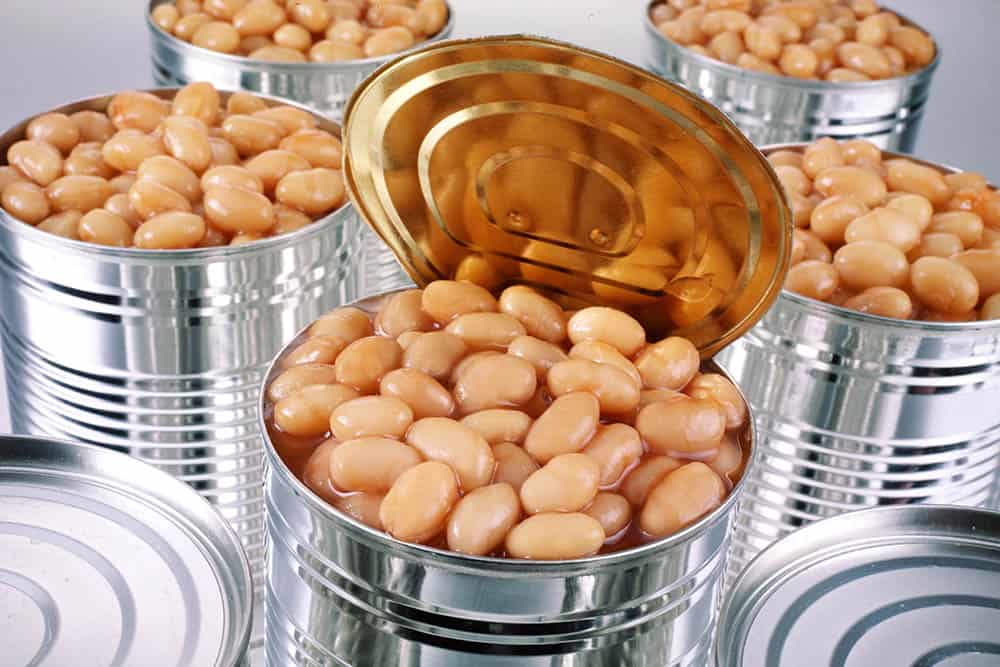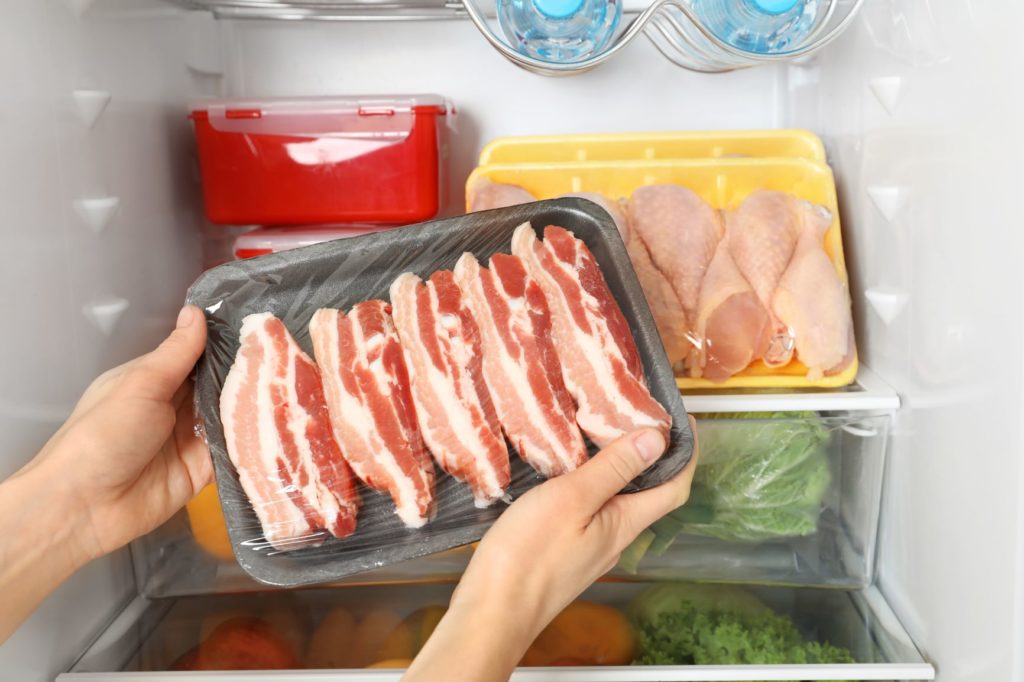Did you just purchase more tomatoes than you needed? Or do you have a more extensive tomato kitchen garden that yielded more tomatoes than you expected?
Don’t worry about where you’ll take the excess tomatoes because there is a way you can store them and extend their shelf life.
This post will answer the frequently asked question—can you freeze tomato juice and any related questions on tomato juices.
Let’s get started.
This post may contain affiliate links. Read my disclosure policy here.
Can You Freeze Tomato Juice?
Yes, you can freeze tomato juice and keep it for a further eight to twelve months, maintaining its quality. However, frozen tomato juice will remain safe even after the twelve months have elapsed in the freezer.
If you intend to use your tomato juice within a short period, refrigerating it will be a better idea. Refrigerated tomato juice can last for seven to ten days without going bad. However, with refrigerated tomato juice, you’ll have to use it within the time frame given.

How to Make and Freeze Tomato Juice
Now that you have known that you can freeze tomato juice, how do you do it becomes the next question. Below is a step-by-step guide on how you can freeze your tomato juice.
1. Prepare Your Tomatoes
Like any other vegetable or fruit, you’ll begin by washing the tomatoes you want to turn into tomato juice. Ensure that you have removed the cores before cutting them into quarters. If your tomatoes have seeds, please be sure to remove them.
2. Soften Your Tomatoes
Once you have washed and cut your tomatoes into quarters, the next step is to soften them.
The reason why you’re softening them is that you want the process of juicing them simpler. Now transfer your tomatoes into a stockpot and turn on the stove, ensuring it’s on medium heat.
Stir the tomatoes in the stockpot to ensure that they don’t stick or that they don’t scorch. Continue stirring your tomatoes until you can see that they have become soft.
3. Process the Tomatoes
For this step, you can juice your tomatoes using a food mill, processor, or juicer, depending on what kitchen appliance you have.
There’s no right appliance—just use what you have because all of them will serve the same purpose.
If you have all of the three appliances, you can use the food mill, then later use the juicer to juice the cores to avoid waste. Besides, you can use the food processors to remove the juice from the tomato peels.
In a nutshell, all the appliances serve the same purpose, but having two or all of them is an even bigger advantage because you can use them for specialized needs.
4. Let Them Sit
Let the tomatoes sit after you have juiced them. I have seen some people recommend that you heat the tomatoes—please don’t. When the juice has cooled enough, you can transfer them into containers where you’ll be freezing them.
5. Pack Them Up
We just brushed through packing your tomato juice in containers (like these) when winding up step four, but let’s expand on that a bit.
In this process, you also have options—you can use plastic containers or use freezer-safe containers to store your tomato juice.
While you have these options to choose from, I recommend that you freeze your tomato juice in ice cube trays. Once your tomato juice is frozen, transfer the cubes into plastic freezer bags.
Whenever you need some tomato juice for your soup, just pull out a few and put them into your vegetable soup for a tasty dish.
Tips for Freezing Tomato Juice
If you didn’t purchase your tomato juice but instead prepared yours from home, ensure that you have sieved it properly. This is essential for consistency during the process of thawing.
However, if you bought tomato juice from your local grocery or supermarket, there’s no need to pass through a fine sieve. All you can do is to ensure you stir the tomato juice before freezing.
Do this to ensure that you minimize the chances of sediments settling at the bottom of the tomato juice container you’ll be using.
When freezing, it’s better to go for the hard-sided freezer containers. Pour the desired amount of tomato juice into every hard-sided container and leave some space (at the top) for expansion.
The next thing you need to do is ensure that you have closed the containers with the tomato juice tightly and labeled them before going into the freezer.
If you’ll freeze your tomato juice in small servings, the best way to freeze them is by using ice tray cubes. To do this, pour the desired portion of your tomato juice into the ice cube trays and take it into the frozen until it freezes.
Once frozen, pop the cubes formed and transfer them into a freezer bag. Seal the bags in line with the date to avoid confusion and store.
When thawing your frozen tomato juice, remove the container you used to freeze them from the freezer and put them in the fridge to start thawing.
Alternatively, you can thaw your frozen tomato juice by running the container you used in freezing your tomato juice under cool water.
Finally, please don’t refreeze previously frozen tomato juice
How Long Does Tomato Juice Last?
Unopened and unrefrigerated manufactured tomato juice will maintain its quality three to six months past the ‘best before’ date.
Once you have opened the manufactured tomato juice, you’ll have to use it for between two to three days, but it will still be safe for up to seven days.
Manufactured tomato juice is always pasteurized before packaging and this is why they can last longer—up to months when unopened.
The unopened manufactured tomato juice can usually extend past the six months—even up to twelve months.
However, you’ll need to use up your tomato juice once you have opened it. If you put it in the fridge, ensure it lasts only up to five days at most.

How Do I Tell If Tomato Juice Is Bad?
There are a couple of ways to detect when your tomato juice has gone bad. That said, throw away your tomato juice if:
- The unopened container has started to leak, rust or bulge. In other words, if there’s something that happened to the container, just assume the tomato juice isn’t safe anymore for consumption
- The smell is weird when you unseal the container top. So open the container and smell to be sure that the smell is off before throwing it away
- You notice that the tomato juice had discolored and didn’t bear the initial color when you first bought or prepared it. Additionally, check for molds around the container and if you notice some, your tomato juice has gone bad
- The taste is off when you have a little taste of your tomato juice. If the taste is what it was when you first bought it or when you first prepared the tomato juice, it is still safe for consumption
- Your tomato juice has lasted in the fridge for more than ten days. It’s normal to forget and that’s fine. However, if you forgot you place tomato juice in the freezer and extends to ten days, please throw it away because it has gone bad
Bad tomato juice can cause food poison and that’s why you need to be cautious not to consume any tomato juice that’s gone bad.
Using the tips above, you can determine whether your tomato juice is still safe for use or it has gone bad and, therefore, not suitable for human consumption.
However, just remember that most tomato juices could go past the ‘best before’ dates depending on how you store them—especially when you store them in the freezer.
Related Questions
1. Can You Freeze Tomato Juice in Glass Jars?
Yes, you can freeze your tomato juice in glass jars. All you have to do is transfer your tomato juice after preparation to clean jars and put it in the freezer. You have the option to serve after it cools or freeze in the freezer in the glass jars used to freeze initially.
2. How Do You Preserve Tomato Juice?
The most important thing when freezing moderate tomato juice is to use ice cube trays. Once the cubes have formed, you can transfer them into a freezer bag and store them safely. Also, ensure you keep your tomato juice in the freezer for as long as you want, as long as you keep it sealed.
3. How Long Can You Keep Tomato Juice in the Refrigerator?
You can keep your tomato juice in the refrigerator for up to three days, but you can continue using it for up to seven days. This is because manufactured tomato juices are usually pasteurized and packaged well, making them safe for consumption for up to a week.
4. How Much Tomato Juice Should You Drink a Day?
You should consume at least 240 ml, which translates to about one cup every day. Tomato juice has many health benefits, including vitamin C. additionally, having a daily intake of tomato juice adds 22 percent of vitamin A to your body every day.
Bottom Line about Freezing Tomato Juice
You don’t have to worry next time you leave the grocery with more tomatoes than you planned to buy because you now know what to do with them—freeze them and store them for longer.
I hope I answered this question—can you freeze tomato juice in the best possible way. If you have any questions or experience preparing and freezing tomato juices, please leave a comment and let me know about it.








I bought a two litre of tomato juice .I’m only allowed a cup of juice every second day,I just use it for drinking so can I freeze it in one cup containers and is it still drinkable up to two weeks .how long can I safely keep it in the fridge
Why can’t I just put the tomatoes in my juicer and freeze the juice?